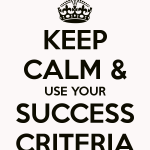By now you should have your Organizational Change Management (OCM) strategy approved and you are ready to plan change activities into your project plan. (If not, here is a link to a previous blog that covers that topic.) This seems like a straight forward project management planning activity. And, in many ways it is:
- You need to do a Work Breakdown Structure (WBS) to identify tasks and subtasks
- Then you have to schedule these tasks and subtasks
- At the same time you need to assign responsibilities
- Finally, you need to create your links, dependencies, assign resources, and then you’re done!
But not quite.
There are 3 things to pay special attention to as you are doing the above for organizational change management activities. Here they are in order of importance.
- Assign sufficiently long durations
- Embed the change activities deeply into the project schedule
- Align change activities across project phases
Assign sufficiently long durations
The question we most often get is when planning our organizational change management activities is, “Why does it take so long to complete a (e.g., Stakeholder Analysis, Change Management Strategy, etc.)?” This is especially since it may easily take 2 – 3 months to fully complete one of these activities, depending on the scope and visibility of the project.
The answer is, “Because it takes that long to get on peoples’ calendars to have them review and approve things!”
Remember, the reason you have a change program is to get people more engaged, especially your decision makers. That means that the purpose of many of your change management activities is to build this engagement (as opposed to simply preparing a document). The way to do that is to involve decision makers in the development process by reviewing and approving these documents.
 Considering who these decision makers are and how busy they are, scheduling these meetings, and often rescheduling them, chews up time. This is true especially the higher up the management hierarchy you go. Plus, often a leader will want a change made that goes against what another leader wanted in your document. So, you have to circle back and ‘rinse and repeat’ a couple of times.
Considering who these decision makers are and how busy they are, scheduling these meetings, and often rescheduling them, chews up time. This is true especially the higher up the management hierarchy you go. Plus, often a leader will want a change made that goes against what another leader wanted in your document. So, you have to circle back and ‘rinse and repeat’ a couple of times.
All of this takes time and lengthens the duration of your tasks. But that is what you have to do. The real goal of these documents is alignment and engagement from your top decision makers. What this ultimately means that you have to resist the pressure to get your timelines down.
Embed the change activities deeply into the project schedule
The best way to integrate organizational change management activities is to have them deeply embedded everywhere in the overall project plan and schedule. The worst way is to have a separate section called “Organizational Change Management” with all of these activities scheduled underneath.
Basically, your organizational change management activities should be indistinguishable from all of your other project activities.
For example, your Stakeholder Analysis tasks should be part of other project due diligence and planning activities, such as defining as-is processes or doing an IT current state assessment. Developing your OCM Plan should happen around the time you are developing your project plan and schedule. Your training material development should happen around the time you are preparing for User Acceptance Testing or you are doing process review workshops. And so on.
If you don’t do it this way you may be surprised when your OCM activities get stripped out because of budget or time pressures later on in the project. If your activities look like they are bolted on, they can be sheared off. And that puts project success at risk.
Align change activities across project phases
 This is a minor point but can crop up and cause you headaches when it comes to project reporting. Some projects, especially the large ones, have clearly defined Go/No Go phase gates. That means that to close off a phase you need to complete everything that is in that phase.
This is a minor point but can crop up and cause you headaches when it comes to project reporting. Some projects, especially the large ones, have clearly defined Go/No Go phase gates. That means that to close off a phase you need to complete everything that is in that phase.
The complication that arises is that some OCM activities don’t lend themselves to fitting neatly within phases.
For example, you could have your initial Organizational Readiness Survey scheduled to go across a project phase transition. Maybe you have it aligned to follow a key education event, such as a series of Show & Tell sessions or Town Halls. Moving the survey to go earlier makes no sense as people won’t understand anything about your project so their answers will be meaningless. Moving it out is also a bad idea because people’s memories will start to fade and their feedback will again be less valuable.
The simplest solution here is to split this activity into two, one that finishes in one phase, and then starts and completes immediately in the next. In the survey example, you could develop the survey in one phase, and then send out and analyze it in the next. Or, you could develop and send it in one phase and analyze and report on it in the next.
The main thing, if you come across this situation, is not to get into long debates about aligning phases and your change activities. That will waste your time and energy, and cause friction with project leadership whose support you depend on.
A final word to fellow project managers
Planning activities and tasks is a natural activity for project managers. Just remember to give yourself sufficient time to properly complete your change activities.
They are meant to engage your key decision makers. If you wisely invest time to do that up front it will save you a lot of time in discussions and even conflicts at the end when every minute begins to count.











